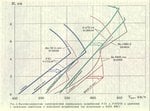Civettone
Tech Sergeant
I disagree that the Bf 109 was outdated by 1945. Quite on the contrary, I think the Bf 109 came back with a vengeance with the K-version. The Bf 109 had lagged behind since the end of 1943 with the arrival of the P-47D, P-38J and P-51B/C over Germany. At this point the Bf 109 was at its weakest. It only started to improve after May 1944 with ever better ata's, the AS, AM and ASM engines and the aerodynamical improvements. This culminated in the beginning of 1945 with the Bf 109K with further aerodynamical improvements and up to 2000 hp. At this point it was once again superior to anything the allies could throw against it. It had better speed and/or climb rate than the P-47, P-38, P-51, Spitfire, Tempest, Yak-3/-9 and La-7 then in action.
New allied versions were coming up but also the Bf 109K-14 was going to get the new DB 605L engine for better high altitude performance. By then it may no longer have been the best around but was still competitive. I believe it lagged further behind back in late 1943 than it did in 1945.
Handling deteriorated at these high speeds but I have never seen a credible account saying the Bf 109K was no longer handable. Combat aircraft generally become more difficult to fly as long as they get better performance.
Kris
New allied versions were coming up but also the Bf 109K-14 was going to get the new DB 605L engine for better high altitude performance. By then it may no longer have been the best around but was still competitive. I believe it lagged further behind back in late 1943 than it did in 1945.
Handling deteriorated at these high speeds but I have never seen a credible account saying the Bf 109K was no longer handable. Combat aircraft generally become more difficult to fly as long as they get better performance.
Kris

